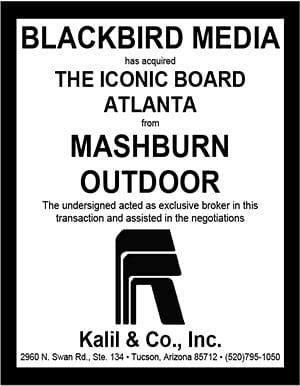
By Michael Wright, Billboard Attorney.
Everyone knows that the Supreme Court’s decision in Metromedia, Inc. v. City of San Diego (1981) is the leading case on sign regulation. For 38 years, courts have followed Metromedia’s four-justice plurality opinion in upholding laws that selectively ban offsite commercial signs. But the 4-2-3 Metromedia decision produced no majority opinion, and – as everyone also knows – non-majority opinions are not binding. So is Metromedia binding precedent? No.
Since it produced no majority opinion, the only way to extract a binding rule from Metromedia is to combine the opinions into a majority. In Marks v. U.S. (1977), the Supreme Court instructed lower courts on how to do that. Marks holds that the rule in a fractured case is “that position taken by those Members who concurred in the judgments on the narrowest grounds.” Surprisingly, no court has ever held that Metromedia is binding precedent under Marks.
Marks’s two criteria are “narrowest grounds” and “concurred in the judgments.” Courts are deeply divided on the meaning of “narrowest grounds.” Due to space restrictions, I will limit the discussion here to the “logical subset” approach to narrowest grounds followed in the Ninth and D.C. Circuits. Under this approach, opinions can be combined only if one opinion necessarily approves all the results reached under another. The circuits are also divided over whether “concurred in the judgment” allows courts to include dissents in defining a logical subset. Counting dissents is problematic because dissenters by definition do not “concur in the judgment.”
Courts usually cite Metromedia as authority that the First Amendment allows cities to ban offsite commercial signs while allowing onsite and noncommercial signs. But in Metromedia, the four-justice plurality and the two-justice concurrence held that a San Diego ordinance that discriminated in that way was unconstitutional on its face, although for entirely different reasons.
The plurality reasoned that because commercial speech receives less protection than noncommercial speech, the city’s interests in safety and aesthetics allowed it to distinguish between onsite and offsite commercial content. But those interests did not allow the city to prefer onsite commercial speech over noncommercial speech or to distinguish among types of noncommercial speech. The plurality thus found the ordinance constitutional as to commercial signs but unconstitutional with respect to noncommercial signs.
The concurrence argued that the ordinance was unconstitutional in its entirety because its practical effect was to eliminate the entire billboard medium. The concurrence expressly rejected the plurality’s commercial-noncommercial distinction.
Three justices dissented in separate opinions. They reasoned that even a total ban on billboards is constitutional if it is viewpoint-neutral and leaves alternative channels of communication open. Each dissenter said the San Diego ordinance met this test.
How does the logical-subset version of Marks result in Metromedia standing for the proposition that cities have free rein to discriminate against offsite commercial signs? It doesn’t. The concurrence expressly rejected that position. The Metromedia plurality and concurrence thus are not logical subsets of each other and cannot be combined into a Marks majority.
To extract a majority under the logical-subset version of Marks, you have to count dissents. But as noted above, dissenters don’t “concur in the judgment.” Further, the dissents’ rationale is not a logical subset of the other opinions. A viewpoint-neutral ban that discriminated among noncommercial messages would pass the dissents’ test but not the plurality’s. The concurrence’s rule – that a de facto ban is unconstitutional – is nearly the opposite of the dissents’.
Under the logical-subset version of Marks, Metromedia is not a binding decision. In U.S. v. Davis (2016) an en banc panel of the Ninth Circuit held that courts within the circuit must apply the logical-subset approach to extract binding rules from fractured decisions. That means courts should cease their slavish adherence to the Metromedia plurality and test sign ordinances under the Supreme Court’s more rigorous commercial speech decisions such as Sorrell v. IMS Health, Inc. (2011).
Decisions like Sorrell permit cities to draw Metromedia’s content distinctions only if they can show that offsite commercial content is more harmful to safety and aesthetics than noncommercial or onsite commercial content. But content is irrelevant to safety and aesthetics. If courts take Marks seriously, selective restrictions on offsite commercial signs will begin to fall.
[wpforms id=”9787″]
Paid Advertisement

















